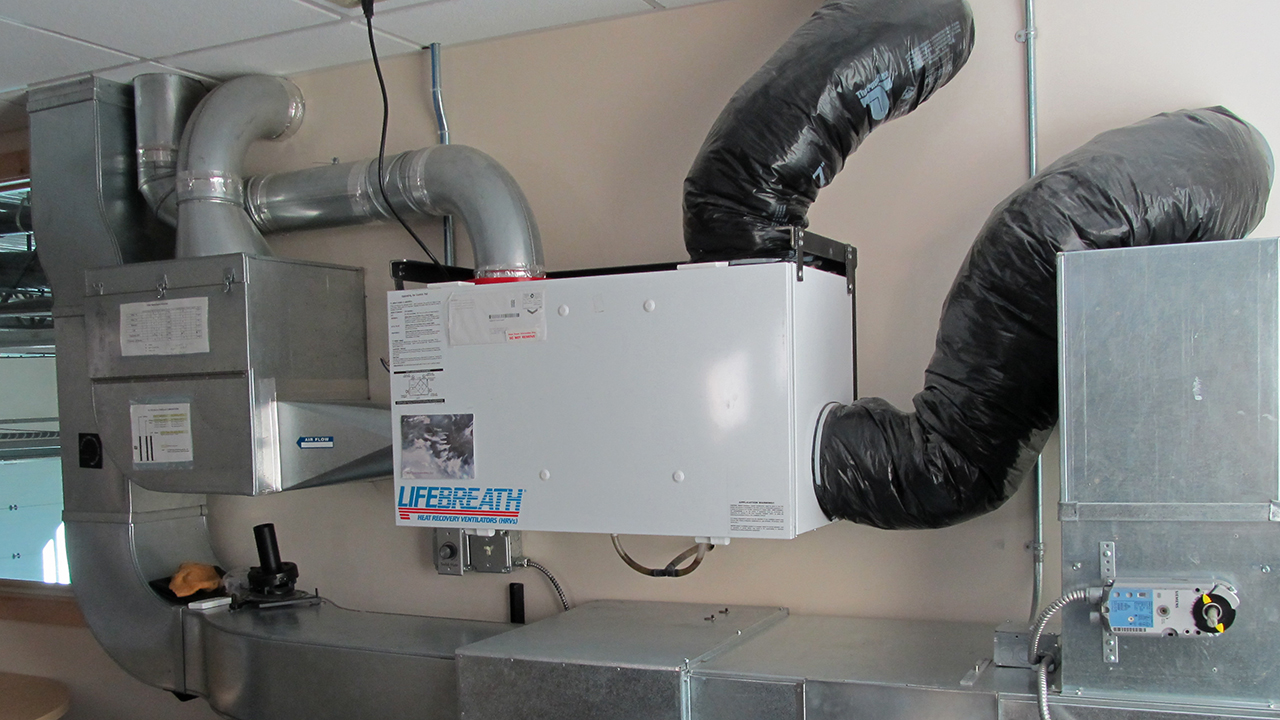HRV vs Other Ventilation Systems: Which Is Best
Wiki Article
Checking out the Conveniences of Heat Recovery Ventilation for Power Effectiveness in Residences
Heat Recovery Ventilation (HRV) systems supply house owners a functional strategy to enhancing power performance. By recovering warmth from outgoing air, these systems can considerably reduce heating and cooling prices. Additionally, they offer a steady supply of fresh air, improving interior air quality and comfort levels. As house owners consider sustainable options, understanding the nuances of HRV systems ends up being progressively essential. What elements should one review prior to making such an investment?Understanding Heat Recovery Ventilation Systems

Exactly How HRV Boosts Indoor Air Top Quality

Power Financial Savings: The Economic Benefits of HRV
Optimizing power effectiveness, heat recovery ventilation (HRV) systems offer substantial monetary benefits for house owners. By recouping and recycling warm from exhaust air, HRVs significantly minimize home heating and air conditioning prices. This technology can bring about power savings of up to 30%, relying on environment and usage patterns. Home owners typically notice decreased utility costs shortly after setup, making HRVs a monetarily smart investment over time. Furthermore, lots of areas give incentives or discounts for energy-efficient upgrades, even more boosting the financial appeal. As energy costs proceed to climb, the cost-effectiveness of HRVs ends up being significantly clear. In general, the unification of HRV systems not only advertises energy performance yet additionally contributes to long-lasting monetary cost savings for homes.The Environmental Impact of Heat Recovery Ventilation
A considerable ecological benefit of heat recovery ventilation (HRV) systems exists in their capability to minimize overall energy usage. By reclaiming heat from exhaust air and moving it to incoming fresh air, HRV systems reduce the requirement for energy-intensive home heating and cooling methods. This reduction HRV Heat Recovery Ventilation in energy demand adds to reduce greenhouse gas emissions, as much less fossil fuel is needed to preserve comfortable interior temperatures. Furthermore, HRV systems enhance indoor air top quality by effectively trading stagnant air with fresh outdoor air, reducing dependence on mechanical cooling systems that can damage the environment. Generally, the execution of HRV systems sustains sustainable living methods and straightens with international initiatives to fight environment change by promoting energy performance in property setups.
Choosing the Right HRV System for Your Home
Just how can property owners assure they select the best heat recovery ventilation (HRV) system for their requirements? They ought to assess their home's size and format, as these elements influence air flow needs. Next off, assessing the system's performance scores is important, as greater scores show much better efficiency and energy savings. House owners need to also think about installation and upkeep expenses, comparing different brand names and designs for value. In addition, it's essential to review sound levels, as some systems run even more quietly than others. Consulting with cooling and heating experts can give tailored suggestions based upon specific home conditions. Lastly, analyzing individual reviews and guarantees can assist in making an informed decision, making sure that the selected HRV system successfully enhances indoor air quality and power effectiveness.Often Asked Concerns

How Often Should I Clean or Preserve My HRV System?
The regularity of cleaning or maintaining a warm recuperation air flow (HRV) system usually depends upon usage and ecological variables. Usually, it is advisable to execute upkeep every six months to ensure peak efficiency and air quality.
Can HRV Equipments Help Reduce Moisture Degrees Inside Your Home?
HRV systems can successfully decrease interior moisture degrees by trading stale, moist air with fresh, drier air from outside. HRV Heat Recovery Ventilation. This process helps maintain a well balanced indoor environment, improving convenience and protecting against moisture-related problems
What Is the Life-span of a Common HRV System?
The life-span of a common heat recovery ventilation (HRV) system varies, generally lasting between 10 to 15 years. Regular upkeep can extend its efficiency and functional life, making certain peak performance throughout its use duration.Exist Any Type Of Noise Issues With HRV Equipments?
Noise problems with HRV systems can develop, especially from fan operation. Many contemporary units are created to minimize audio levels, ensuring they run quietly while maintaining performance, which attends to potential disturbances in living settings.Can I Set Up an HRV System Myself, or Do I Required an Expert?
The specific contemplated whether to set up the heat recovery ventilation (HRV) system personally or employ an expert. Generally, while do it yourself installment is feasible, proficiency warranties correct functionality and conformity with local building ordinance, enhancing system effectiveness.Report this wiki page